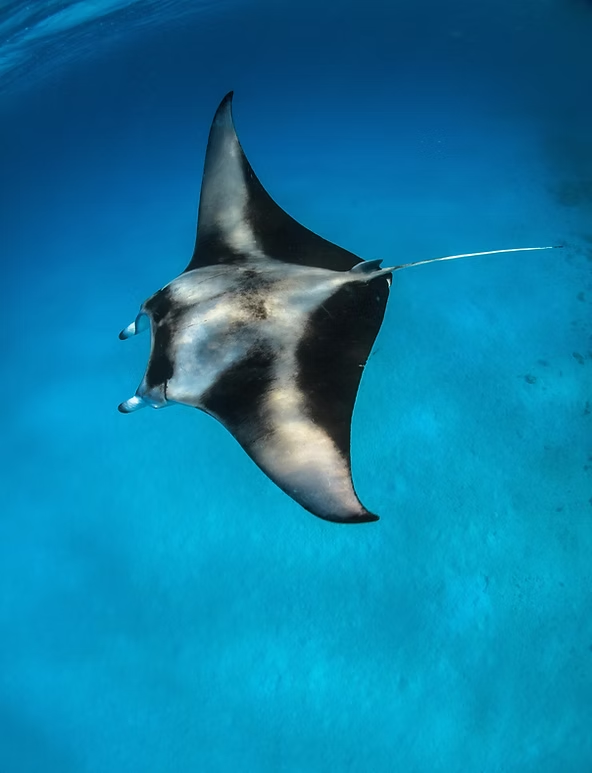Giant Manta Rays: Ocean Giants
The giant manta ray is the largest ray in the world, growing up to 29 feet (8.8 meters) across. Once thought to be a single species, scientists now recognize two: the giant manta ray, an oceanic wanderer, and the reef manta ray, which lives closer to shore.
Feeding on Plankton
Despite their enormous size, giant mantas feed on some of the ocean’s tiniest creatures—plankton. Like whale sharks and basking sharks, they filter food from seawater by swimming with their mouths open. Unique flaps, called cephalic lobes, help funnel water and prey directly into their mouths, making them efficient filter-feeders.
Habitat and Lifestyle
Giant manta rays live in tropical, subtropical, and temperate oceans around the world. They are most often seen in offshore waters but can also gather near coastlines. Although generally solitary, they sometimes form groups for feeding or mating. Known to migrate long distances, they occasionally venture into colder waters. With lifespans reaching at least 40 years, they reproduce slowly—only one pup every two to three years—making populations particularly vulnerable.
Conservation Challenges
The greatest threat to giant mantas is fishing. They are caught both intentionally and as bycatch, largely due to demand for their gill rakers in traditional medicine markets. While conservation measures exist in many regions, illegal and unsustainable fishing persists. On the brighter side, giant mantas attract scuba divers and eco-tourism, giving them significant economic value alive, which may encourage stronger protection.
Why They Matter
Much about giant manta rays remains a mystery, from their growth to their migration patterns. Continued research and monitoring are essential to protect these gentle giants and ensure their survival. Protecting them not only preserves a species but also safeguards an icon of ocean biodiversity that inspires awe worldwide.

